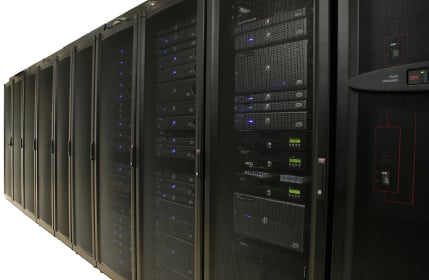 Strategic planning is the backbone of every successful enterprise. Savvy executives plan for growth, especially when it comes to fundamentals like IT infrastructure services.
Strategic planning is the backbone of every successful enterprise. Savvy executives plan for growth, especially when it comes to fundamentals like IT infrastructure services.
Growth used to mean companies simply added on: more space, more equipment, more people. Costs went up, but the rising revenue would make it up, hopefully with rising profitability as well. However, increasing the size and/or quantity of IT infrastructure services begins to increase complexity on an exponential scale. Today, lean and agile are common watchwords. While you still want your bottom line to grow, continuing to simply add on no longer works. Successful growth depends as much -- or more -- on reducing costs, exploiting efficiencies and looking at transformational opportunities, as it does on increasing revenue.
In today's world, the way you evaluate your operations, and the way you plan for growth, have changed dramatically.
Looking into the future.
How can you continue to find and implement efficiencies within IT infrastructure services? Planning for growth focuses on streamlining every aspect of IT to reduce costs and improve productivity.
What’s your strategy for dealing with systems that may be aging past cost-effectiveness? Whereas you used to automatically purchase new equipment or applications, now there are numerous alternative operating models that can provide the highest quality infrastructure and services required to meet your ever-more demanding business requirements.
Your IT staffing may be just right for now for your existing IT infrastructure services, but the total cost of labor is high when you consider everything from hiring and training to salaries and benefits. Continuing education is also costly, but it’s a business essential, especially in a field like IT where change occurs at lightning speed. Will you have the resources to keep up, especially as your complexity increases?
You can be confident the future will bring increasing complexity and the corresponding problems for your IT infrastructure services. Can you continue to guarantee the shortest possible recovery period, no matter the magnitude or complexity of the problem? Do your business continuity plan keep up with the complexity and change that is now constant in your IT infrastructure services?.
In the past, many executives were loathe to allow anyone outside their company to see into their operations. Everything was considered confidential or proprietary. The only defense was to keep everything in-house.
Planning for growth: consider transformational alternatives.
Today's business environment is based on sharing, collaboration, the web, the cloud and mobility. Tremendous advances in encryption and other security mechanisms have made it possible to share and partner with others without fear of compromising the most sensitive information and putting the company at risk.
Planning for growth now involves understanding and seriously considering alternative operating models that could bring significant cost reductions while providing broader revenue generation opportunities and improving service levels throughout your organization.
Alternative models can help you make minor adjustments or revolutionize the way your IT infrastructure services look and function. They can augment or supplant your current IT program. You might choose to make internal improvements, migrate your infrastructure to the cloud, outsource certain types of support or services or management.
The arrangement you choose must be carefully tailored. You need solutions that can streamline your operation but keep it nimble and assure superior services while trimming the costs of services. The right solutions will ensure top business value throughout IT and meeting current needs while positioning you well for the future, one which could be substantially different depending on your company’s goals and the evolving marketplace.
Successfully adapting to the future means adopting new ways of doing business. However you plan to adapt your IT infrastructure service, it will have to minimize ongoing expenses and total cost of ownership. But even more important, it will have to open doors, not simply improving service quality but helping you capture new opportunities to expand services and revenue.
Everyone in your organization depends on IT infrastructure services. Planning for growth ensures your technology, processes and personnel can be managed cost-effectively yet provide the adaptability and service quality required for success in a rapidly-changing environment.

